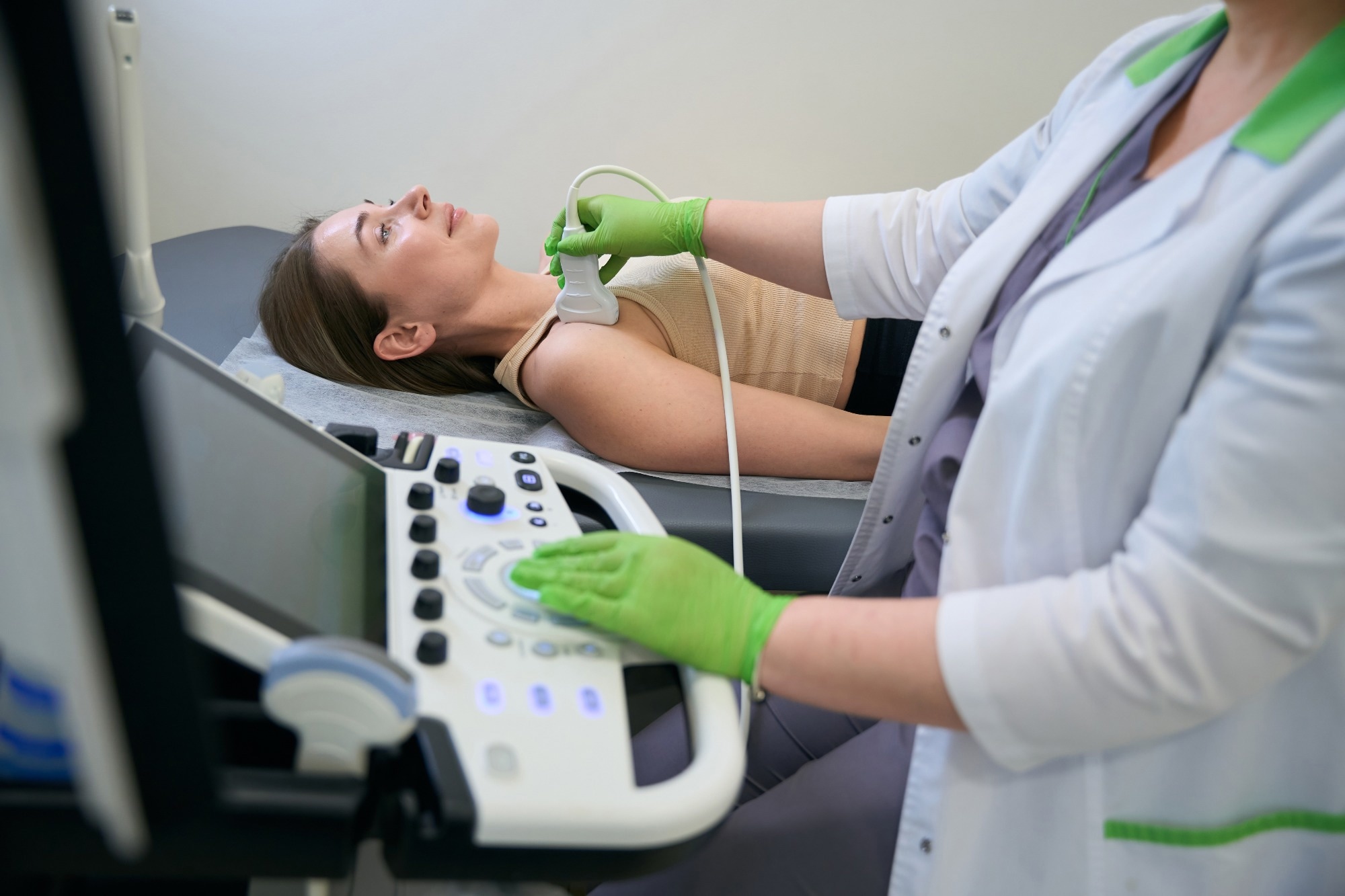Scientists have developed a DNA nanoflower that delivers chemotherapy and gene therapy directly to breast cancer cells, boosting effectiveness while reducing side effects in early tests.

Image Credit: Svitlana Hulko/Shutterstock.com
Breast cancer continues to be one of the most prevalent cancers worldwide. Although drugs like Doxorubicin (DOX) are commonly used, their effectiveness is often limited by toxicity, poor targeting, and the development of multi-drug resistance. DNA nanostructures, due to their biocompatibility and programmability, are gaining attention as more precise delivery vehicles.
Researchers have created a new DNA nanoflower-based drug delivery system capable of co-delivering an antisense oligonucleotide (ASO) and the chemotherapy drug DOX.
Published in Micro & Nano Letters, the study demonstrates how they used a dual amplification method to form a flower-shaped DNA nanostructure with a high drug-loading capacity and highly targeted delivery.
This study focuses on tackling the limitations of traditional DOX-based therapies by combining gene silencing and chemotherapy into one delivery system. The DNA nanoflowers are also functionalised with AS1411, an aptamer that binds to nucleolin (a protein overexpressed on many tumour cells), improving targeting accuracy.
Building the DNA Nanoflower
The research team used a two-step amplification process to construct the nanoflowers. First, they used rolling circle amplification with Phi29 DNA polymerase to produce long single-stranded DNA sequences with repeating units. These sequences were then further amplified using multiplexed enzyme amplification, forming the unique nanoflower structure.
Specific sequences were engineered into the DNA scaffold to carry both the ASO and DOX drugs. ASO targeted PLK1, a gene associated with cancer cell growth and division, while DOX was intercalated directly into the DNA structure, making use of its natural affinity for DNA bases.
The AS1411 aptamer was conjugated to the nanostructure to enable tumour-specific targeting. The team confirmed the structure’s size, morphology, and successful functionalisation using a range of analytical techniques, including transmission electron microscopy, dynamic light scattering, and gel electrophoresis.
In Vitro and In Vivo Testing
In vitro experiments were carried out using MCF-7 breast cancer cells to assess cellular uptake, gene silencing, cytotoxicity, apoptosis, and cell migration. The researchers used flow cytometry, CCK-8 assays, qRT-PCR, western blotting, and Transwell migration assays to evaluate these parameters.
The in vivo phase of the study used nude mice implanted with MCF-7 cells to form breast tumours. Once tumours had developed, mice were treated locally with the nanoflower formulations.
Promising Results in Early Tests
Analysis of the DNA nanoflowers showed their high drug-loading efficiency and their uniform, flower-like shape. The aptamer-functionalised structures showed significantly enhanced uptake in cancer cells compared to non-targeted controls.
In lab tests, the nanoflower carrying both ASO and DOX (referred to as DNF-ASO@DOX) reduced tumour cell proliferation and triggered apoptosis more effectively than either DOX or ASO alone. The ASO silenced PLK1 expression, confirmed at both the mRNA and protein levels, and resulted in cell cycle arrest and increased cell death.
The system allowed for controlled drug release in response to enzymatic signals, specifically FEN1, which is overexpressed in tumour cells. This meant the active agents were mainly released at the tumour site, minimising damage to healthy tissue.
In animal studies, tumours treated with DNF-ASO@DOX showed markedly reduced growth. Tissue analysis revealed higher levels of apoptosis and lower PLK1 expression in tumour cells. Blood tests and organ inspections indicated minimal systemic toxicity, supporting the biocompatibility of the nanoflower platform.
Looking Ahead
The study highlights the potential of DNA nanoflowers as a new kind of combination therapy tool, able to deliver both genetic and chemotherapeutic treatments in a highly targeted way. With its tumour-specific binding and controlled release mechanisms, the platform could offer a new route to overcome issues like multi-drug resistance and off-target side effects that currently limit breast cancer treatments.
Journal Reference
Shen X., Zhu A., et al. (2025). DNA Nanoflower Enables Controlled Co-Delivery of Antisense Oligodeoxynucleotide and Doxorubicin for Anti-Breast Cancer Treatment. Micro & Nano Letters. DOI: 10.1002/mnnl.202500008,


